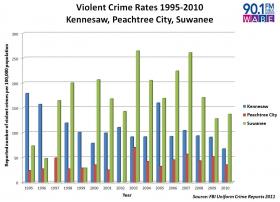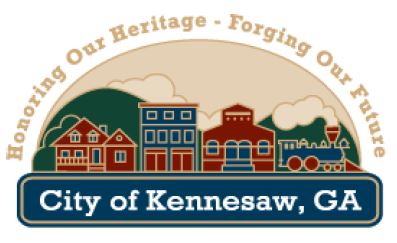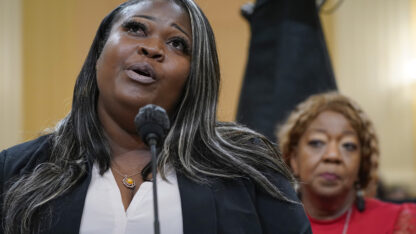Kennesaw made national headlines with its 1982 ordinance requiring heads of households in the city to own a gun, which had been passed originally as a pro-gun reaction to a ban on handguns that had been enacted earlier that year in Morton City, Illinois. Since that time, it has been repeatedly cited by gun rights proponents as an extremely effective deterrent to crime – and criticized by others as having no effect. 
Now, only two days ago, the city council of the small north Georgia town of Nelson voted to mandate gun ownership for residents, citing Kennesaw’s ordinance as a model. Heath Mitchell, the police chief of Nelson, said he plans to put up signs announcing the new gun ordinance at the city limits as a warning to others.
Kennesaw’s gun law may well be the best-known and most-argued-over local ordinance of any city in the country. But people on both sides of the gun violence issue ignore an important fact about the Kennesaw ordinance: it has never been enforced, and it is probably unenforceable.
And this is also true of the new ordinance in Nelson. It doesn’t have an enforcement mechanism.
Lieutenant Craig Graydon, a 26-year veteran of the Kennesaw police department, has been making this exact point, over and over, for years. He has been quoted saying this, in one way or another, to several publications (including Reuters, the Financial Times, NBC News, and Bloomberg). He attributes Kennesaw’s low crime rate to good policing and community work, not to the ordinance.
Perhaps we should check the ordinance itself. Here is the complete text of the ordinance from Municode.com:
Sec. 34-21. – Heads of households to maintain firearms.
(a) In order to provide for the emergency management of the city, and further in order to provide for and protect the safety, security and general welfare of the city and its inhabitants, every head of household residing in the city limits is required to maintain a firearm, together with ammunition therefore.
(b) Exempt from the effect of this section are those heads of households who suffer a physical or mental disability which would prohibit them from using such a firearm. Further exempt from the effect of this section are those heads of households who are paupers or who conscientiously oppose maintaining firearms as a result of beliefs or religious doctrine, or persons convicted of a felony.
It’s clear that all the exceptions listed in section (b) would make the ordinance extremely difficult to enforce. Almost anyone could find a way to exempt themselves if they wanted to avoid having to have a gun in the house.
But most importantly, the ordinance does not specify a penalty. Even if the city wanted to enforce the ordinance, there’s no fine or jail time that could be used to threaten or punish anyone who flaunts the law.
The new ordinance in Nelson doesn’t specify a penalty either.
So with no enforcement, why has Kennesaw’s ordinance stirred up such controversy?
***
Pro-gun advocates have claimed for years that Kennesaw has a lower crime rate because of the ordinance. Kennesaw’s city website makes no bones about it: “After passage of the law, the burglary rate in Kennesaw declined and even today, the City has the lowest crime rate in Cobb County.”
Conversely, gun control advocates claim that crime in Kennesaw is really no different to the crime rates of other affluent bedroom communities near a major city such as Atlanta. 
But if you look at the FBI statistics on violent crime, you’ll see that Kennesaw’s rate is one of the lower but is not the lowest in the Atlanta region.
Crime rates are a complicated matter, influenced by any number of factors. It’s hard to isolate one factor, such as a city ordinance. A recent article in the Los Angeles Times noted that experts have been unable to reach a conclusion about whether Kennesaw’s crime rate is a result of the ordinance or something else – like good policing and community work, as Lt. Graydon has suggested.
In an interview with Bloomberg last December, Lt. Graydon again said that the exemptions to the ordinance make it all but impossible to enforce. In contrast to what he called Kennesaw’s “Wild West image,” Lt. Graydon estimated that actual gun ownership in Kennesaw today is probably around 50%. He speculated that many residents who have moved to Kennesaw in recent years probably don’t even know the ordinance is on the books.
As he told Bloomberg, “We’re a typical suburban town.”
Well, maybe not entirely typical.
***
This argument over Kennesaw’s ordinance has raged for years. But it’s hard to reconcile all the partisan Sturm und Drang with the fact that the ordinance has never been enforced.
Perhaps it’s to be expected that Kennesaw’s ordinance would become a partisan flash point after an outbreak of gun violence. Each such outbreak inevitably sparks public debate over gun ownership and drags Kennesaw into the national spotlight again.
It happened after the 2007 Virginia Tech shootings. It happened after the shootings in Aurora, Colorado, last summer.
Now, it is happening again in the aftermath of the tragedy in Newtown, Connecticut.
Never mind that the ordinance has not, will not, and cannot be enforced.
The arguments continue apace. But whenever partisans on either side of the gun issue look at Kennesaw, and now Nelson, they see what they want to see.


9(MDAxODM0MDY4MDEyMTY4NDA3MzI3YjkzMw004))









